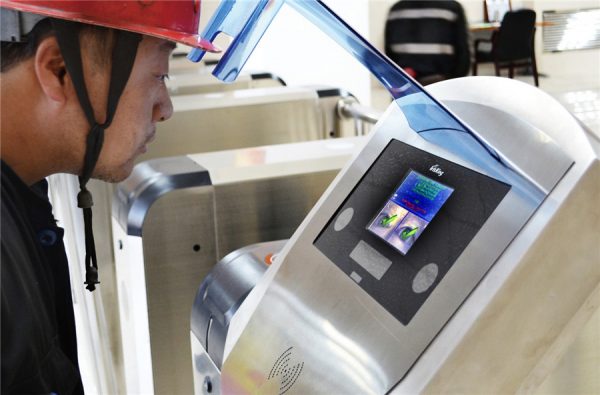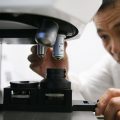
They’re also a record of a person’s identity, and China is embracing biometric technology to take advantage of the unique properties of the iris.
Experts can map the iris – the colored ring between the black pupil and the white sclera – of a human eye. It is a unique individual feature that remains unchanged from age 1, said expert Tan Tieniu, an academician of the Chinese Academy of Sciences.
“Compared with fingerprints and facial-recognition, iris-recognition is more reliable and stable. For example, fingerprints are prone to wear and facial recognition has difficulty distinguishing twins. The iris does not wear and is stable across a lifetime. Even twins have totally different iris details,” Tan said.
Starting from scratch
In 1998, Tan returned to China from the United Kingdom and established an iris-recognition research team at the CAS Institute of Automation. At that time, China lagged behind many countries in the technology.
“Foreign research institutions cannot sell iris image readers to us or share iris images for research. We had to start from scratch and develop the technology independently,” Tan said.
After years of effort, Tan’s team made great progress in hardware design and an identification algorithm. They have published more than 120 papers in international journals and made presentations at conferences.
Tan said the automation institute’s iris image database, which was built by his team, is currently one of the most widely used in the world, with more than 20,000 research teams from 180 countries applying to use it.
New uses
With the progress in basic research, Tan’s team began to explore technology transfer to commercial products. The automation institute started a company called IrisKing in late 2006.
Ma Li, Tan’s first PhD student in iris-recognition research and CEO of IrisKing, said the technology was first applied in the mining industry.
“To improve safety, a mining company came to us in 2007 for a reliable system to identify authorized miners going underground. They said fingerprints or facial recognition sometimes failed to work because miners’ hands and faces were covered with coal dust,” Ma said.
The company also developed iris-recognition products and solutions in various sectors, including banking, public security, government – and other entities requiring access control.
With the rapid development of artificial intelligence technology, iris-recognition has also been upgraded, and a growing number of startups are working in the field.
IrisKing applied the technology as part of a national platform to battle child-trafficking. More than 400 iris-collection spots have been set up around the country, where parents can voluntarily scan their children’s iris and put it in the database. Once a child goes missing or is found, an iris scan can discover his or her identity much faster than DNA testing.
Iris-scanning is a relatively new technology. With increasing application scenarios, it is winning public acceptance and the market is maturing, Ma said.
“We will continue to improve the technology to offer a better user experience. For example, we have developed smart door locks and anti-fatigue systems for driving vehicles based on iris recognition, which will be positive contributions to daily life,” Ma said.
Iris recognition usually requires users to cooperate by looking into a camera, which is difficult at more than a few meters. Several years ago, Tan’s team started developing a long-distance iris-recognition technology and has taken recognition out to 5 meters, which means a simple glance at the machine will be enough to scan an iris.
Global market
According to Transparency Market Research, the global biometrics market – all forms of biological identification – will grow to $23.3 billion in 2020, with the market for iris-recognition technology expected to grow at 28.6 percent per year to $2.45 billion by then.
Ma said IrisKing has already gained a share of the global market, with its products and services exported to the US, India and countries in Africa and the Middle East.
“We have exported our products to the Middle East, where we used our technology in the banking and financial services sector, including ATMs for quick and secure user authentication,” Ma said.
Iris recognition has been widely used in many countries in applications requiring high security, such as homeland security, anti-terrorism, and social security.
India has initiated a national plan to collect biometric data, including iris data from every citizen. Singapore has launched iris-recognition for ID cards, passports, immigration and border clearance.
“We aim to provide world-class iris recognition technology and products for daily applications with an improved user experience and lower cost.”


